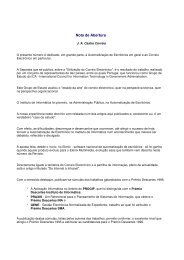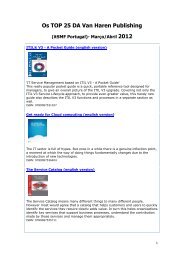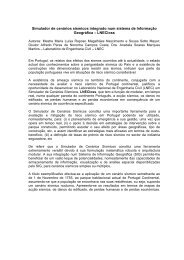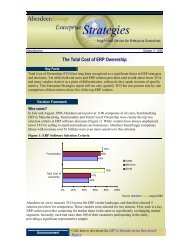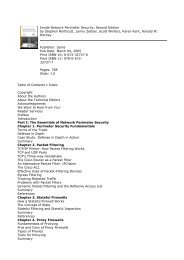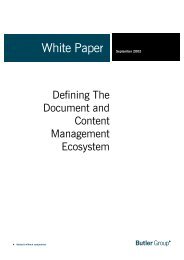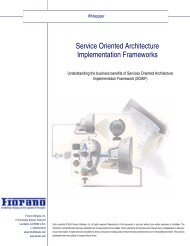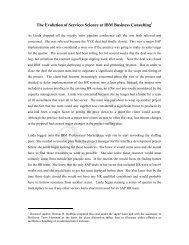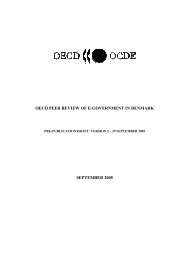Australian Government Information Interoperability Framework (pdf
Australian Government Information Interoperability Framework (pdf
Australian Government Information Interoperability Framework (pdf
You also want an ePaper? Increase the reach of your titles
YUMPU automatically turns print PDFs into web optimized ePapers that Google loves.
The elements in the information lifecycle are presented as if in a sequence, but it shouldbe understood that elements may be undertaken simultaneously, iteratively, partially orin different orders. The lifecycle can be seen as a continuum of activities that facilitateintegrated service delivery, give information on particular issues and support themanagement of joint areas of activity.Enabling <strong>Information</strong> <strong>Interoperability</strong> as part of the information lifecyclePlanningPlanning includes the identification of the information requirements relevant to anywork activity. In striving to achieve <strong>Information</strong> <strong>Interoperability</strong>, agencies should do thefollowing:• Identify the potential uses of new information collections, particularly any potentialfor its use by other agencies and citizens and any long-term storage requirements.They should address these uses in the planning and designing stage.• Adopt standard concepts and definitions for recording data and items so thatinformation can be easily compared.• Consider any potential barriers to making the information available to others.Ongoing third party consent issues should be addressed.T H R E E W H A T I S I N F O R M A T I O N ?Create and collect<strong>Information</strong> is created, collected, captured or accessed in a variety of ways from a varietyof sources as part of a business need. <strong>Information</strong> can be created or collected by, or onbehalf of someone or some agency. Prior to creating new information holdingsagencies should undertake a review to determine if the information required can besourced from an existing collection.In collecting information agencies should:• inform the providers of the information of the purpose and intended uses of thecollection and seek appropriate consents; and• monitor and manage the quality of information as it is collected to ensure that it isaccurate and adequately meets the intended purpose.Organise and storeOnce created or collected, information needs to be organised and stored to enableconsistent treatment (for example, logical organisation/collation to best reveal patternsand trends) and to enable easy location/access/retrieval to support business processes.To better support users, agencies should organise and store:• information in a manner where common requests for access can be servicedefficiently; and• appropriate metadata so that information can be described to and discovered byusers easily and efficiently. (Metadata is data about data. It includes informationdescribing aspects of actual data items, such as name, format, content, and thecontrol of, or over, data.)<strong>Information</strong> <strong>Interoperability</strong> <strong>Framework</strong> Sharing information across boundaries19



